Which example of a food chain is in the correct order?
A. sun->producer->secondary consumer->decomposer
B. producer->primary consumer->predator->secondary consumer
C. decomposer->producer->primary consumer->secondary consumer
D. sun->producer->primary consumer->secondary consumer
D. sun->producer->primary consumer->secondary consumer
Giant anteaters are found in Central and South America. They live in grasslands, deciduous forests, and rainforests. Anteaters have no teeth, but still manage to eat up to 35,000 insects a day! Their main prey include termites and ants. What type of organism are anteaters?
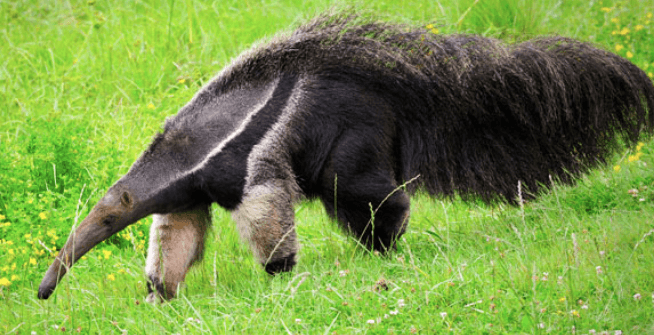
A. Scavengers
B. Carnivores
C. Omnivores
D. Herbivores
B. Carnivores
This picture is an example of ________.

A. Mutualism because the lion and buzzards are helping the zebra.
B. Commensalism because the buzzards are following the lion for food, but the lion is not affected.
C. Competition because the buzzards and lion want the same food source.
D. Disease because the zebra is sick.
C. Competition because the buzzards and lion want the same food source.
If the mice population were to increase, the sparrow population would most likely ________.
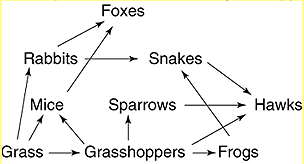
A. Sparrows would most likely increase.
B. Sparrows would most likely decrease.
C. Sparrows would most likely not be affected.
D. None of these answers.
B. Sparrows most likely would decrease.
Chimpanzees poke sticks into termite colonies to catch the termites to eat. This is an example of _______.
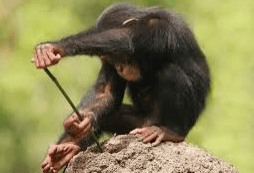
A. Commensalism
B. Competition
C. Predation
D. Parasitism
C. Predation
Which organism in the food chain is both a predator and a prey?
A. Organism A
B. Organism B
C. Organism C
D. Organism D
C. Organism C
Although there are different species of foxes, such as red and gray foxes, they all have similar diets. Both species of foxes are skilled at hunting for small animals, like mice and rabbits, but they also enjoy eating fruits. What kind of consumers are foxes?
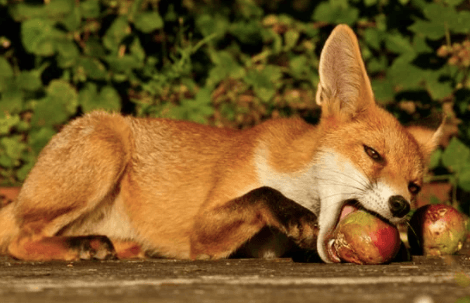
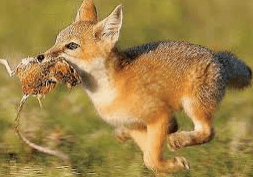
A. Carnivores
B. Omnivores
C. Herbivores
D. Producers
B. Omnivores
Algae grows on spider crabs. The algae gets a hard, flat surface to live and grow on and the spider crab is able to camouflage from predators. What kind of relationship do they share?
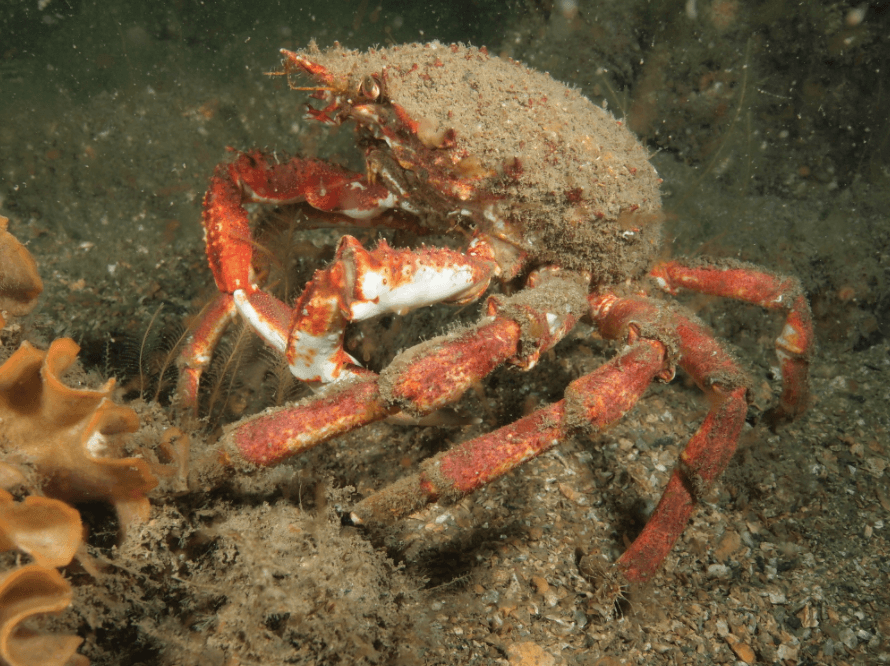
A. Friendship
B. Mutualism
C. Commensalism
D. Predation
B. Mutualism
Which population in this food web would most likely be negatively affected by an increase in the mouse population?
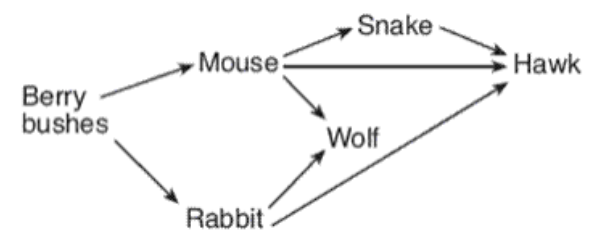
A. Snake
B. Rabbit
C. Wolf
D. Hawk
B. Rabbit
Which organisms on the food web are in competition with each other?
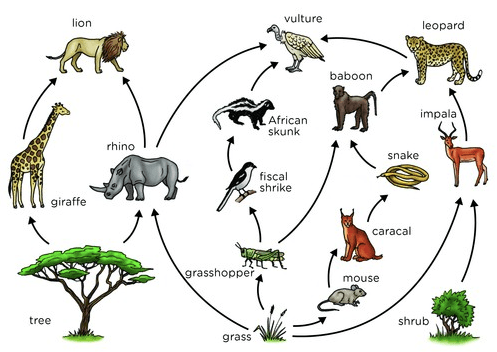
A. Lion and Leopard
B. African Skunk and Baboon
C. Impala and Grasshopper
C. Impala and Grasshopper
Which organism is an omnivore?

A. Meerkats because they eat seeds.
B. Squirrels because they eat seeds and grasshoppers.
C. Buzzard because it eats squirrels and meerkats.
D. Bird because it eats seeds and grasshoppers.
D. Bird because it eats seeds and grasshoppers.
Which organisms on the food web are carnivores?
A. Snakes, Hawks, Sparrows, Rabbits
B. Frogs, Hawks, Grasshoppers, Foxes
C. Mice, Sparrows, Hawks, Foxes
D. Foxes, Hawks, Sparrows, Snakes
D. Foxes, Hawks, Sparrows, Snakes
Pilot fish follow sharks and eat parasites off the shark and scraps from the shark's food. Sharks do not eat pilot fish and provide protection from predators. What kind of relationship is this?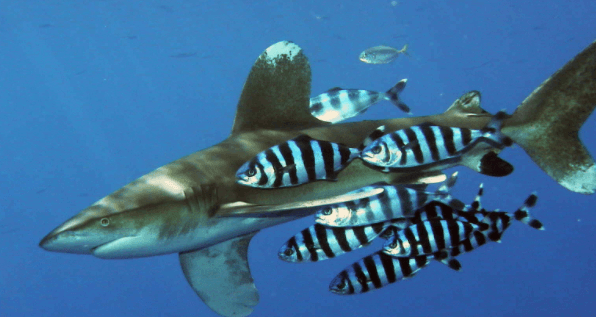
A. Mutualism
B. Commensalism
C. Predation
D. Parasitism
A. Mutualism
Some pesticides that farmers use on crops and flowerbeds contain a chemical that causes bees to hibernate for a longer period of time in the spring. As a result, they might miss out on flowers blooming in early Spring. Therefore, bees are unable to pollinate as many flowers and they cannot collect the nectar their colony needs. Which statement is true about the use of these pesticides?
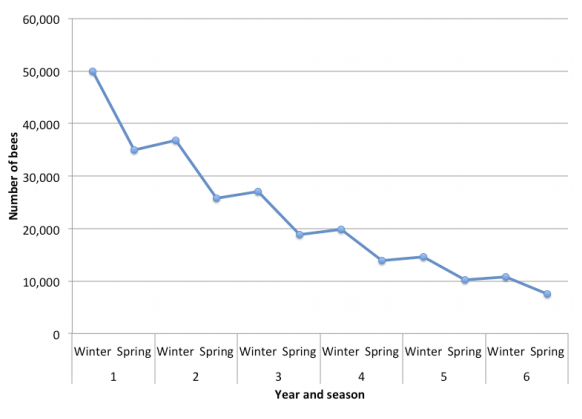
A. The use of these pesticides is causing an increase bee populations over time.
B. The use of these pesticides is causing a decrease in bee populations over time.
C. The use of pesticides does not affected the bee populations.
D. None of these.
B. The use of these pesticides is causing a decrease in bee populations over time.
Which statement is true?
A. This is an example of competition because the kangaroos are fighting over food scarcity from a drought.
B. This is an example of predation because the male kangaroos are hunting the smaller female kangaroos.
C. This is an example of competition because the male kangaroos are fighting over the female kangaroos.
D. This is an example of mutualism because the male kangaroos are helping each other practice fighting against predators.
C. This is an example of competition because the male kangaroos are fighting over the female kangaroos.
CHOOSE 2: According to the law of conservation of energy, which answer choices correctly describe what happens to energy as it moves up the energy pyramid?
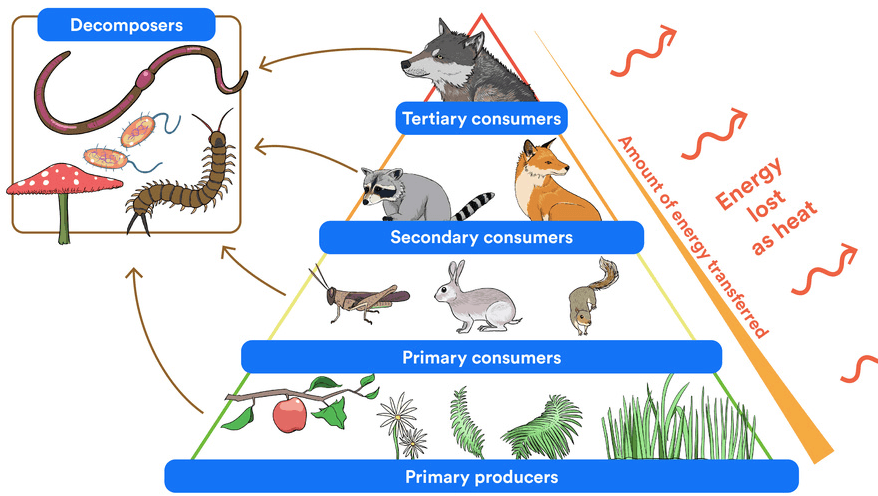
A. All of the energy gets transferred when one organism eats another.
B. Some of the energy gets transferred when one organism eats another.
C. When it reaches the top, the top predators use up all the energy and it is gone forever.
D. It is not created or destroyed, but it changes into heat.
B. Some of the energy gets transferred when one organism eats another.
D. It is not created or destroyed, but it changes into heat.
Which organisms on the food web below is are tertiary consumers?

A. Snake and Fox
B. Owl and Fox
C. Snake and Owl
C. Snake and Owl
In Brazil, there is a fungus that infects carpenter ants and grows inside the insect’s body. At first, it drains the ant of nutrients and takes over the ants mind. The fungus will eventually make the ant climb to a better temperature, away from its colony, where the fungus is able to grow rapidly, shooting mushrooms out of the ant's body.
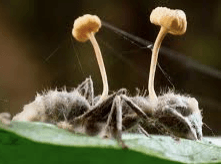
A. Predation
B. Competition
C. Commensalism
D. Parasitism
D. Parasitism
What will most likely happen to the foxes and the wolves if the rabbits are removed from the energy pyramid?

A. The foxes will stay the same because they will consume the grasses.
B. The wolves will stay the same because they will still be top predators and consume foxes.
C. The wolves and foxes will increase because the grass population will increase.
D. The wolves and foxes will decrease because of food scarcity.
D. The wolves and foxes will decrease because of food scarcity.
Permafrost is found in the tundra, a biome or environment that has colder temperatures and weather all year. Permafrost is a layer of ice found beneath Earth's surface. Is permafrost an abiotic or biotic factor?
A. Permafrost is biotic because it is a living thing.
B. Permafrost is abiotic because it is a non-living thing.
C. Permafrost is biotic because it is a non-living thing.
D. Permafrost is abiotic because it is a living thing.
B. Permafrost is abiotic because it is a non-living thing.
Which statement about the type of organism that completes this food chain is NOT true?
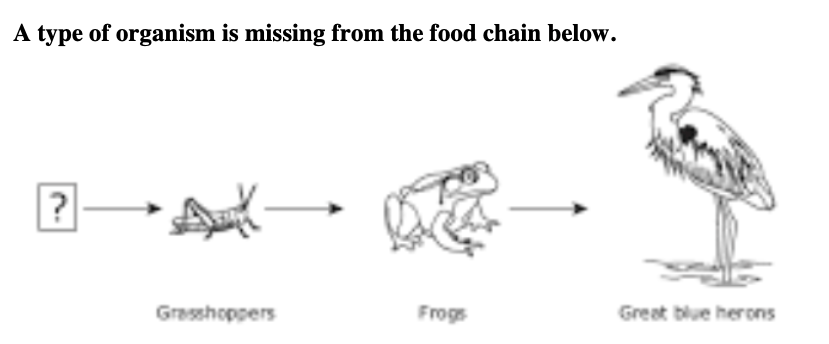
A. It produces its own food.
B. It is unable to move on it's own from one place to another.
C. It gets energy from the sun.
D. It breaks down nutrients from dead organisms.
D. It breaks down nutrients from dead organisms.
The diagram below shows a simple food chain. Which of the following animals might compete with the coyote in this food chain?


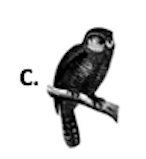
What kind of relationship is represented in this video?
A. Commensalism because the ant lives in the tree and the tree is not affected.
B. Parasitism because the ant takes nutrients from the tree and the tree loses seeds.
C. Mutualism because the tree gives the ant food and shelter and the ant protects the tree.
D. Predation because the ant stings and bites the grasshopper to make it the ant's prey.
C. Mutualism because the tree gives the ant food and shelter and the ant protects the tree.
The picture below shows a coastal marine food chain. If sea otters move into the ecosystem, they will eat all the sea urchins. What change would this cause?

A. The kelp would have less food.
B. The crabs would have more food.
C. The sea ducks would have less food.
D. The arctic foxes would have more food.
C. The sea ducks would have less food.
Which are biotic factors in the ecosystem below?

A. Turtles, Log, Sun, Water
B. Dragonfly, Air, Trees, Fish
C. Log, Deer, Grass, Ladybug
D. Sun, Water, Air, Log
C. Log, Deer, Grass, Ladybug